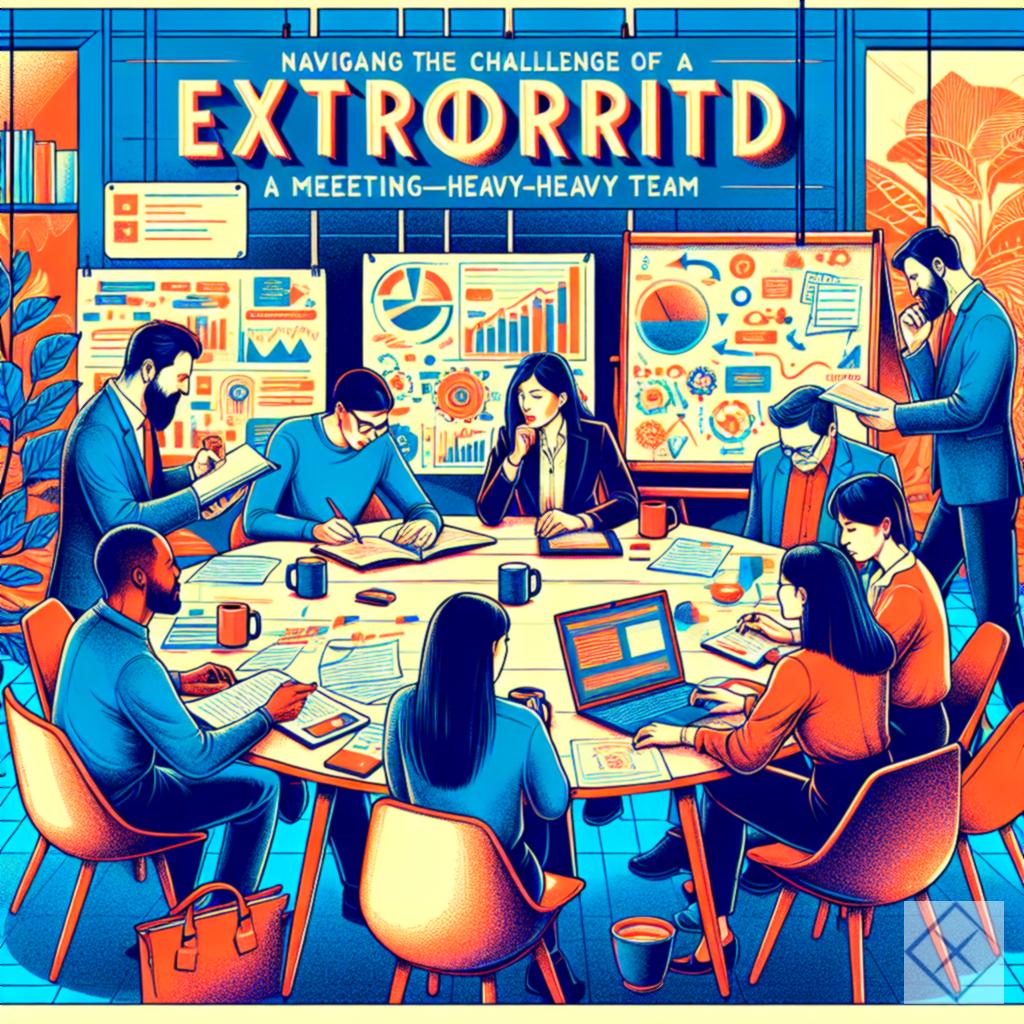Trying to navigate a team that is way too "extroverted" and "meeting friendly" for me.

Navigating the Challenge of an Extroverted, Meeting-Heavy Team
Joining a new team can be a daunting experience, especially when the dynamics are vastly different from what you’re used to. In this post, we’ll explore the challenges faced by a software developer who found themselves in a team overflowing with extroverts who thrive on long meetings and have a wealth of domain knowledge. We’ll also discuss potential strategies for adapting and improving team collaboration.
Understanding the Landscape
Upon joining a new company, our protagonist quickly realized that they entered a team characterized by its extroverted nature. Meetings stretched on for hours, daily stand-ups consumed half an hour, and sprint planning sessions felt more like marathon discussions than concise planning. The collective tribal knowledge of the team was impressive but intimidating, as it left little room for new members to catch up or contribute effectively.
This situation isn’t unique; many professionals in tech have experienced similar challenges. The overwhelming flow of information can leave newcomers feeling lost, exhausted, and frustrated. As one commenter noted, “You need to be able to accept that, for the time being, you’re the dumbest person in the room.” This acknowledgment, while difficult, is often a crucial step in the adaptation process.
The Meeting Culture Dilemma
Meetings serve a purpose, but when they become the primary mode of communication, they can hinder productivity. Comments from others reflect the sentiment that long meetings often lead to unnecessary tangents and a lack of actionable outcomes. A common concern was the lack of documentation resulting from these discussions, which created a cycle of confusion and inefficiency.
“Do they actually produce sane code? At faster than a snail’s pace?” asked one commenter, highlighting the reality that without clear documentation and well-defined requirements, teams can easily fall into a pattern of rework due to miscommunication.
Strategies for Improvement
-
Embrace Documentation:
- A recurring theme in the replies was the importance of documentation. One suggestion was to take the initiative to document decisions made during meetings, especially when the discussions become convoluted. This not only aids personal understanding but can also serve as a resource for the entire team.
- Implementing a structured approach, such as creating a Git repository for RFCs (Requests for Comments), can help streamline decision-making and ensure that everyone is on the same page.
-
Utilize Asynchronous Communication:
- Instead of relying solely on meetings, explore asynchronous communication methods like emails or team collaboration tools. This can help reduce the pressure to respond immediately and give team members time to think through their responses.
- Push back gently when team members default to meetings for every discussion. Saying something like, “I need flow time for X, I can’t do a meeting for at least four hours,” can help establish boundaries.
-
Engage in One-on-Ones:
- Taking the time to meet with your manager or key team members individually can be beneficial. Discuss the challenges you’re facing and the need for better documentation. Share specific examples where poor documentation has led to confusion or delays.
-
Active Listening and Note-Taking:
- While participating in meetings, practice active listening. Some commenters shared their experiences of zoning out during lengthy discussions, using the time to focus on other tasks. However, a balance is necessary; jotting down key points, action items, and decisions can provide clarity and context later.
-
Introduce Breaks in Long Meetings:
- If meetings regularly exceed an hour, suggesting breaks can help mitigate cognitive fatigue. One contributor humorously mentioned, “If I gotta go to ze bathroom, I go to the bathroom.” Prioritizing personal needs can help maintain focus and productivity.
-
Foster a Culture of Feedback:
- Bringing up concerns in retrospectives can be a productive avenue for addressing cultural issues within the team. Prepare thoughts in advance to ensure clarity and constructiveness in the discussion.
Conclusion
Navigating a team that is overly extroverted and meeting-heavy can be a challenge, but it’s essential to remember that adaptation is a process. By embracing documentation, leveraging asynchronous communication, and engaging in open discussions with team members, one can begin to bridge the knowledge gap.
As the professional journey unfolds, it’s crucial to maintain a balance between contributing to team dynamics and ensuring personal well-being. Ultimately, fostering an environment where knowledge is shared and documented will not only benefit new team members but also enhance overall team productivity.
In closing, remember that while it can feel overwhelming, you’re not alone in this experience. Many professionals have faced similar challenges and found ways to thrive. With patience and strategic action, it’s possible to transform a chaotic meeting culture into a more efficient and collaborative environment.
"Feeling overwhelmed by your team's dynamics? Schedule a 1-on-1 coaching session to navigate and thrive!"
Related Posts
- Are there exercises you’ve done that you’ve found useful when starting to manage a new team
- What style 1:1 do you run with your reports & manager
- Are there exercises you’ve done that you’ve found useful when starting to manage a new team?
- I built a tool to automate my EM documentation duties - here’s what I learned after using it for a year
- Ideal team size